How To Do a Basic Bike Fit
Here is a quick video on how to do a basic bike fit.

I Love Bicycling is a website that is geared towards cycling for beginners with road cycling tips, training articles, nutrition tips, weight loss, how to’s and bike repair articles.
by Lee Agur
Here is a quick video on how to do a basic bike fit.

by Lee Agur
Having problems with your rear derailleur? Watch this short video to learn how to keep it shifting smoothly.
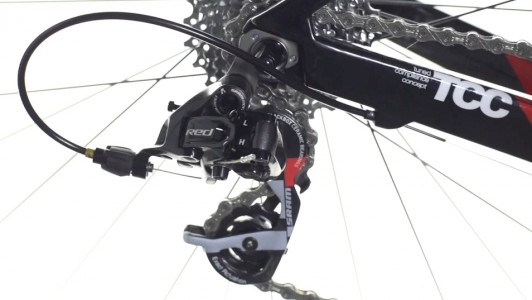
by Lee Agur
Having problems with your front derailleur? Watch this short video to learn how to keep it shifting smoothly.
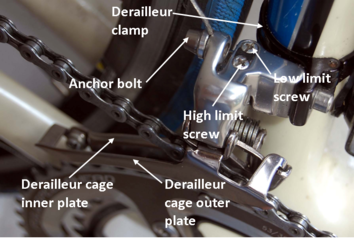
by Lee Agur
All to often people skip the all important apres bike clean… this can decrease the life span of your components quite significantly. Learn how to clean a bike properly in this 15 minute video.
I hose my bike down before cleaning the chain (unlike the video) but… it probably doesn’t matter that much.
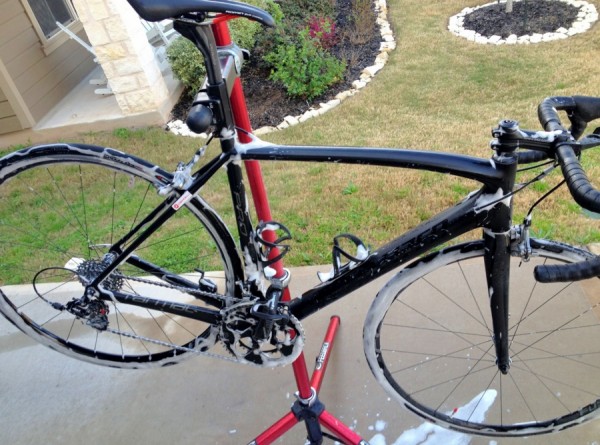
by Lee Agur
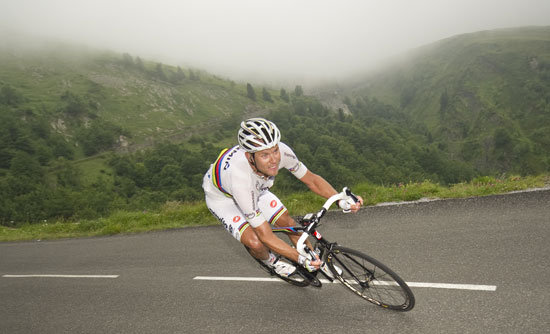 Brake your bad habits! Proper braking will lead to safer riding and ultimately… faster riding. Scrubbing the proper amount of speed at the right times will make you a more efficient rider saving valuable energy for when it is needed.
Brake your bad habits! Proper braking will lead to safer riding and ultimately… faster riding. Scrubbing the proper amount of speed at the right times will make you a more efficient rider saving valuable energy for when it is needed.
Anticipation of when to brake and how much to brake is half of the battle. This is especially true when you are in a group ride. Keeping a finger or two on the brakes when you anticipate a corner or a slowdown will prevent you from slamming on the brakes because you were already in the right position and you were able to start braking earlier rather than later.
A lot of braking is done by feathering the brakes, this is accomplished by lightly squeezing the brakes. Feathering a brake can be accomplished with one finger and should not slow you down so much that you feel your weight shift forward. This is a particularly important skill when drafting in groups to help prevent yoyo effects and wasted energy.
In the event that you have to brake hard you should keep a few things top of mind.
First, most of your braking power comes from your front brake… I will throw out a generic number like 70% of your braking power comes from your front brake. The reason is that all of your weight an momentum is shifting forward putting more weight and pressure on your front tire… resulting in more grip and more stopping power. This leads me to my next suggestion.
Shift your weight further back and low. If you allowed your weight to shift forward it would become difficult to steer. An easy remedy for this is to be in your drops whenever you anticipate harder braking, this will automatically shift your weight back and low and will also allow you to brace yourself so that your weight does not shift to far forward.
For emergencies only! In order to stop abruptly for potential hazards on the road (fallen cyclists, car doors opening, or that stop sign you nearly missed) you need to slam on those brakes. In order to do that safely you have to move your weight back as far as possible, as low as possible and as quickly as humanly possible. I sometimes throw myself back so fast and so hard that my ass is just over the wheel and my chest is on my seat.
The key to braking fast is touch, weight distribution and experience. In order to brake quickly balance braking as hard as possible without skidding. Without the right touch you may brake too hard and skid out loosing valuable time, but more importantly, control. If you brake too softly you are not able to carry as much speed into a corner and you have to start braking much earlier. This balance is learned through experience. Test the limits of both extremes as you become more comfortable with your bike handling skills.
Remember that most of your braking power is in your front brake, I cannot stress this important fact enough for newer cyclists. This is even more important when the terrain tilts downward. If you are newer to biking I challenge you to try going down a hill and only braking with your back brake then going down that same hill at a similar speed again and try braking with only your front brake in order to learn the important differences.
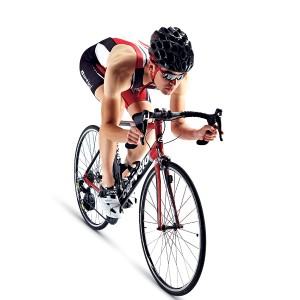 You obviously have to be much more careful on wet and slippery surfaces. If you brake with your front brake too much on slippery surfaces the front wheel will slide out from underneath you and you may end up in a ditch faster than you know what happened. Your experience will be very important here as the proper touch and weight distribution will be amplified. Try to keep your bike more upright in order to prevent slip outs, break earlier and more gently and if you start to feel as if you are losing traction ease up on the breaks.
You obviously have to be much more careful on wet and slippery surfaces. If you brake with your front brake too much on slippery surfaces the front wheel will slide out from underneath you and you may end up in a ditch faster than you know what happened. Your experience will be very important here as the proper touch and weight distribution will be amplified. Try to keep your bike more upright in order to prevent slip outs, break earlier and more gently and if you start to feel as if you are losing traction ease up on the breaks.